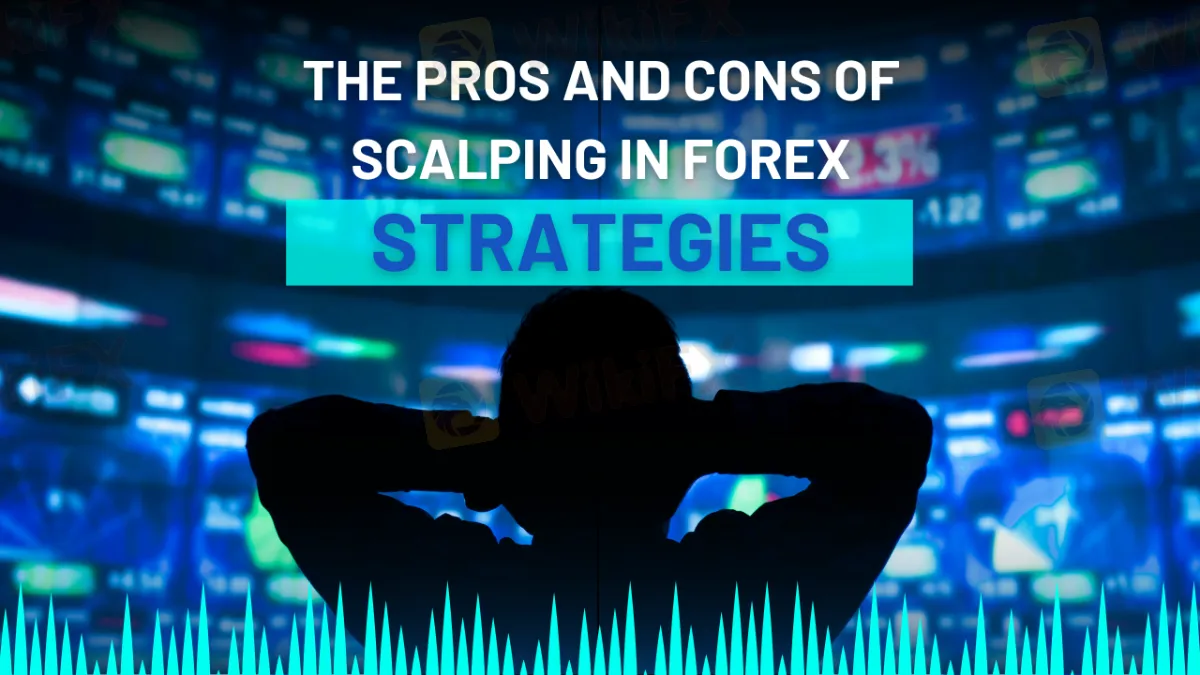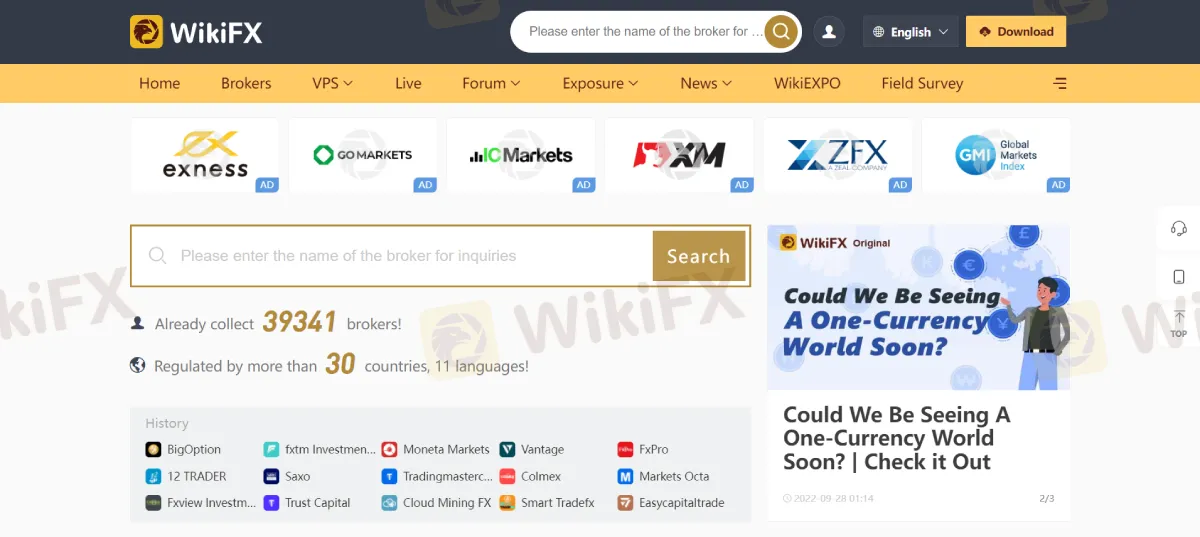简体中文
繁體中文
English
Pусский
日本語
ภาษาไทย
Tiếng Việt
Bahasa Indonesia
Español
हिन्दी
Filippiiniläinen
Français
Deutsch
Português
Türkçe
한국어
العربية
The Pros And Cons Of Scalping In Forex Strategy
Abstract:Scalping in the foreign exchange market involves trading in very short time frames. Fast and potentially exciting trading has its benefits and drawbacks. In this article, we will discuss forex scalping, how to include it in your overall strategy, and how to control your risk while doing so.

Forex scalping is a method of trading currencies on the shortest-period charts. It's a fast and possibly thrilling approach to trade that has advantages but also disadvantages. Continue reading to learn more about forex scalping, how to use it as part of a plan, and how to properly manage your risk.
What exactly is Forex scalping?
Scalping forex is making a high number of fast currency transactions in a short period of time in order to amass a series of modest gains.

While a position trade may last many months or even a year, and a swing trade may last a few days to a few weeks, a scalp trade lasts just minutes, if not seconds. This implies that scalp traders must always be completely focused on the chart and be able to respond to price swings in real-time. If a scalp trader does not concentrate in this manner, he or she may overlook potentially lucrative setups.
Scalping As A Forex Trading Strategy: An Overview
Forex scalping is the practice of purchasing and selling foreign currencies in order to benefit from changes in exchange rates. The international currency market is the world's biggest, with over $6.5 trillion traded across currencies on a daily basis. Traders and investors may take short-term positions in currencies and then record an offsetting deal. The difference between the original trade's exchange rate and the exit trade's exchange rate results in a gain or loss.
For example, if a US trader began a buy position in euros at the euro-to-US-dollar exchange rate of $1.1050 and subsequently sold the position at the rate of $1.1150, the profit would be 0.0100 or 100 pips or around 1%.
A forex scalping trading strategy may have a profit objective of as little as 10 or 20 pips. To maximize earnings, the scalper would start many transactions or increase the position size of each trade.

Scalping has become a feasible method for retail forex traders as a consequence of the low barriers to entry into the world of forex trading. Scalping is popular among newbies since it needs less market expertise and established trading ideas.
Because the forex market is vast and liquid, traders may readily enter and exit trading positions.
Scalping is an excellent option for people who dislike waiting for a deal to finish. Positions are often kept for a relatively short term, which reduces the likelihood of reversals that might impair a trading position.

It is vital to remember that the forex scalper often demands a greater deposit that can manage the level of leverage required by the investor to make the short and tiny transactions viable. Leverage is a kind of margin in which the trader borrows from the broker to increase the size of the position. Leverage, on the other hand, may compound both earnings and losses.
Profits are reduced on each deal, making it difficult to meet a trader's financial objectives. A “5-pip” deal yield may be inadequate for many traders.
Because of the modest amount of profit in each transaction, a single trading loss might wipe out the profits from numerous successful deals. Good transactions might have a risk-reward ratio of one to one or less.
Currency market volatility or extreme fluctuations may boost scalping gains and profits while also exacerbating losses. Forex scalping may be dangerous and result in the loss of a trader's brokerage account. For example, a trader may not have an exit plan or a stop-loss transaction that automatically unwinds the deal. If the transaction swings against the forex trader, he or she may suffer frequent and severe losses. As a consequence, newbies to forex trading should learn about forex scalping before making their first transaction.
About WikiFX
WikiFX is a platform for searching worldwide corporate financial information. Its primary duty is to give the included foreign exchange trading organizations basic information searching, regulatory license seeking, credit assessment, platform identification, and other services.

Over 39,000 brokers, both licensed and unregistered, are listed on the network. WikiFX's staff has been hard at work with 30 financial authorities from across the world to verify that the information supplied is factual and correct.
Stay tuned for more Educational Forex News.
Download the WikiFX App from the App Store or Google Play Store.

Disclaimer:
The views in this article only represent the author's personal views, and do not constitute investment advice on this platform. This platform does not guarantee the accuracy, completeness and timeliness of the information in the article, and will not be liable for any loss caused by the use of or reliance on the information in the article.
Read more

Axi Reveals Game-Changing Edge Score Tool to Elevate Traders
Axi launches the Edge Score Explainer, a tool providing traders with real-time insights, personalized metrics, and actionable data to enhance trading performance.

High Risk, High Returns: Is This True?
Leverage is one of the most talked-about tools in trading. It promises big returns but comes with huge risks. Traders often wonder if leverage is a blessing or a curse. There are arguments on both sides. Some traders believe it is a game-changer. Others think it can ruin your account. What is your take on this?

FCA Plans to Transform Financial Regulations in the UK
The Financial Conduct Authority (FCA) has revealed plans to reform its regulatory framework to support economic growth in the United Kingdom.

Is eToro Leaving London to Focus on a $5B U.S. IPO in 2025?
eToro plans a $5B U.S. IPO in 2025, shifting focus from London to the U.S. market. Discover details on eToro's valuation, SEC filing, and future in fintech.
WikiFX Broker
Latest News
IG Japan Extends US Stock CFD Trading Hours in 2025
ALERT! Warning against Livaxxen
Which Zodiac Sign Makes the Best Trader?
Plus500 Collaborates with Topstep, Prop firm
Robinhood Launches Crypto Trading Services in Spain
Archax Secures FCA Approval to Oversee Crypto Promotions in the UK
CLS Global Admits to Crypto Fraud
Philippine SEC Urges Caution Regarding Ecomamoni
Become Women Brand Ambassador of Yamarkets
Naira Falls Against Dollar as Nigeria Reshapes Economic Blueprint
Currency Calculator


